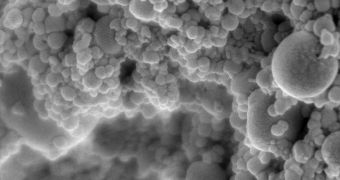When patients receive hip or knee prosthesis, they expect to be able to wear the medical devices for many years. However, failures occur relatively often, and this entails extra risks for elderly patients. Researchers in the US are currently working on a method of preventing that from happening.
If chemical engineers at the Massachusetts Institute of Technology (MIT), in Cambridge, are successful in their effort, then many patients will gain access to implants coated with a special new material, which prevents premature failure.
This condition affects around 17 percent of the million patients who get artificial hips or knees every year in the United States. If these implants fail, then the ensuing surgeries can pose significant risks for older patients.
By creating a special adhesive capable of preventing premature failing, MIT investigators want to reduce the incidence of replacement surgeries, and also to increase the lifespan of medical implants.
“This would allow the implant to last much longer, to its natural lifetime, with lower risk of failure or infection,” explains the MIT David H. Koch professor in engineering, Paula Hammond. She was also the senior author of a new paper describing the findings.
The work appears in the latest issue of the esteemed scientific journal Advanced Materials. Graduate student Nisarg Shah was the lead author of the research. The team explains that implants fail when a glass-like, synthetic bone cement cracks, allowing the implant to separate from the bone.
“Typically, in such a case, the implant is removed and replaced, which causes tremendous secondary tissue loss in the patient that wouldn’t have happened if the implant hadn’t failed,” Shah explains.
“Our idea is to prevent failure by coating these implants with materials that can induce native bone that is generated within the body. That bone grows into the implant and helps fix it in place,” he adds.
The alternative the MIT group is proposing is a special type of thin film, measuring only 100 nanometers to 1 micron in depth. The film is made up of special materials that promote bone growth.
As new bone tissue grows into the implants, the medical devices are secured firmly in place, minimizing the risk of separation considerably. In addition, the films also provide a defense against bacteria that would otherwise grow in the cracks that develop in regular bone cement.

 14 DAY TRIAL //
14 DAY TRIAL //